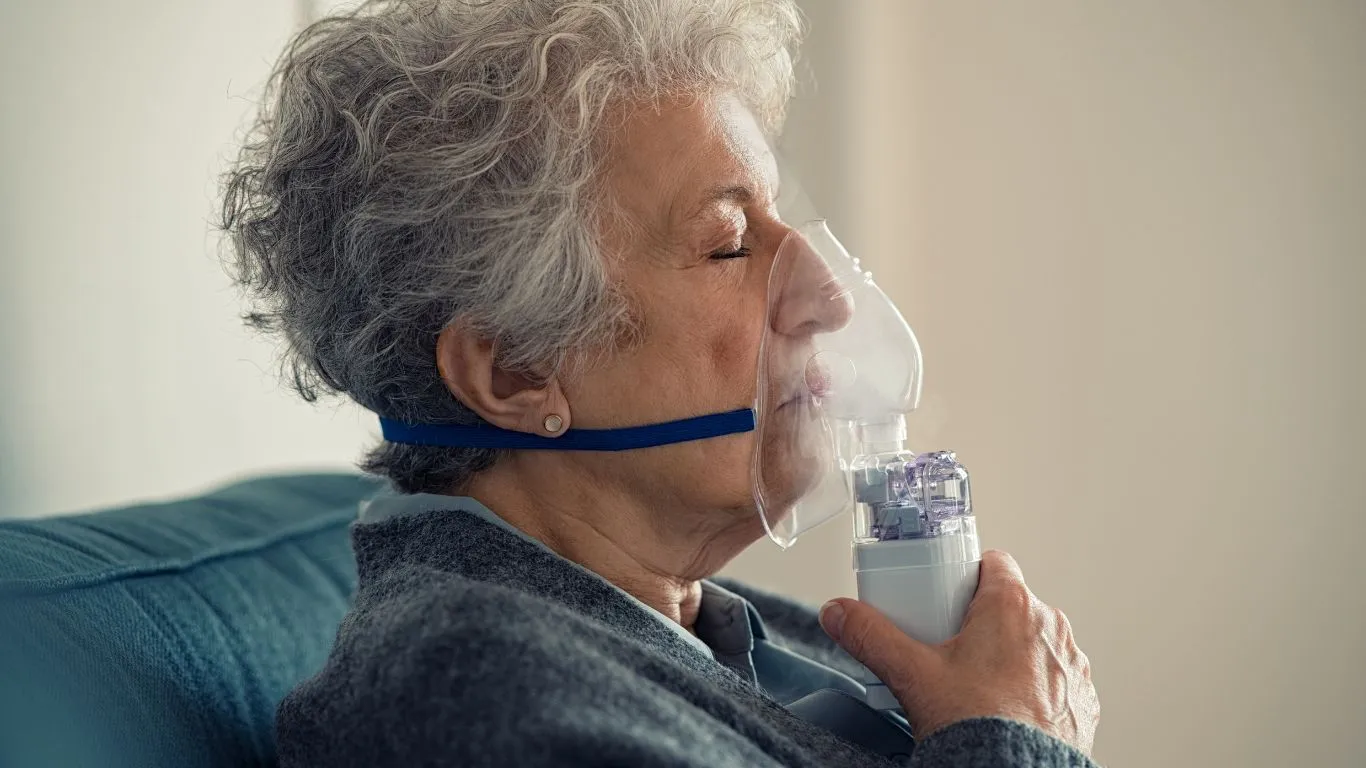The Best Air Quality Settings for Asthma: Improve Your Breathing and Health
As someone who’s spent years studying asthma and its effects, I can tell you that managing asthma goes far beyond just taking medication. One of the key factors that can drastically improve an asthmatic’s quality of life is ensuring that the air they breathe is as clean and healthy as possible. Whether you’re at home, work, or on the go, air quality plays a crucial role in minimizing asthma attacks and symptoms. In this guide, we’ll dive into the best air quality settings for asthma, which will make a real difference in your daily life.
The Importance of Air Quality for Asthma Control
For anyone living with asthma, air quality is a constant concern. Poor air quality can trigger symptoms, cause flare-ups, and in some cases, lead to more serious health complications. Air pollution, allergens, and even indoor environmental factors like humidity levels can play a major role in asthma exacerbations. As someone who’s worked with countless asthma patients, I’ve seen firsthand how controlling air quality can make a huge impact.

But here’s the thing: controlling the air quality isn’t just about getting rid of dust or opening windows for ventilation. It’s about taking intentional steps to create an environment that’s consistently safe and beneficial for your respiratory health. This means understanding the best air quality settings for asthma, whether that’s adjusting your home environment or choosing the right devices to help you manage indoor air quality.
Understanding the Impact of Air Quality on Asthma
It’s easy to overlook just how much air quality affects asthma, especially when you’re dealing with flare-ups and tight schedules. However, it doesn’t take long to realize that poor air can make it harder to breathe, increase your reliance on rescue inhalers, and potentially lead to long-term complications. In my experience, the most common culprits are:
- Outdoor Pollution: Things like vehicle emissions, industrial pollution, and smog can cause irritation in the lungs, making it harder to breathe, especially during high-pollution days.
- Indoor Allergens: Dust mites, pet dander, mold, and other allergens are often the hidden offenders in asthma flare-ups. These indoor allergens are especially problematic during seasons when you’re spending more time indoors.
- Humidity Levels: Both high and low humidity can irritate the respiratory system. Too much moisture can foster mold and mildew, while dry air can irritate the airways and make asthma symptoms worse.

Key Factors to Consider for Optimal Air Quality
When it comes to asthma, air quality isn’t one-size-fits-all. Everyone’s asthma triggers and sensitivities are different. However, there are a few key factors that generally apply to most people with asthma. Let’s break down some of the most important considerations:
1. Air Purifiers: A Must-Have for Asthma Sufferers
When I first started working in respiratory health, one of the most consistent pieces of advice I gave to my patients was to invest in a good air purifier. Air purifiers are specifically designed to filter out harmful particles in the air, including dust, pollen, pet dander, and even bacteria and viruses. For those with asthma, using a high-quality air purifier can significantly reduce exposure to irritants that may trigger flare-ups.
There are a few things to keep in mind when choosing an air purifier:
- HEPA Filters: Make sure the purifier uses a HEPA filter. These filters are capable of capturing small particles (as small as 0.3 microns), which includes many of the common asthma triggers.
- Size and Coverage Area: Choose an air purifier that’s appropriate for the size of the room where you’ll be using it. A small purifier won’t be effective in a large space, and a large one may be overkill in a smaller room.
- No Ozone: Some air purifiers generate ozone, which can be irritating to the lungs. Opt for ozone-free models, especially if you have asthma.
2. Controlling Humidity: The Right Balance
Humidity can play a major role in asthma control. While it’s important to keep the airways moist, too much moisture can trigger mold growth and dust mites. On the flip side, dry air can cause your airways to tighten up. Maintaining the right balance is key.
Using a humidifier in dry conditions and a dehumidifier in humid conditions can help maintain optimal indoor air quality. Aim for a humidity level between 30-50%, as this range is typically safe for people with asthma. When humidity is out of balance, you may notice that asthma symptoms are worse or harder to manage.

3. Ventilation: A Natural Air Flow
Ventilation might seem like an obvious solution, but it’s not as simple as just cracking open a window. Airflow is crucial for reducing indoor pollutants, but it’s also important to manage how much outdoor pollution enters your home. For instance, if you live in an area with high air pollution or allergens, opening windows during peak pollution hours might actually make things worse.
Consider installing an air exchange system or using exhaust fans to help manage air flow without letting in harmful outdoor pollutants. The goal is to create an environment that brings in fresh air but doesn’t overwhelm your respiratory system with irritants.
4. Avoiding Common Triggers
Beyond the technical settings, one of the best ways to improve air quality is by reducing common asthma triggers in your environment. I’ve always found that addressing these specific triggers first can give immediate relief:
- Dust and Pet Dander: Regular cleaning, using allergen-proof covers for pillows and mattresses, and keeping pets out of bedrooms can go a long way in improving air quality.
- Cleaning Products: Some cleaning agents can release volatile organic compounds (VOCs), which are harmful to the lungs. Opt for natural or fragrance-free cleaners whenever possible.
- Smoking: Smoking indoors can have an immediate and severe effect on air quality. If you smoke, it’s essential to do so outside to protect both yourself and others in the household.
Creating an Asthma-Friendly Environment at Home
When it comes to managing asthma, your home is one of the most important places to focus on. After all, it’s where you spend a significant amount of time, and air quality inside your home can either help keep your symptoms at bay or make things worse. I’ve worked with many asthma patients who saw huge improvements in their breathing simply by adjusting the indoor environment. It’s not always about big changes; even small adjustments can have a noticeable impact on asthma control.

1. Clean Regularly – But Carefully
Let’s talk cleaning. Keeping your home clean is essential, but when you have asthma, it’s not just about wiping down counters or vacuuming the floors. The type of cleaning products you use, as well as the methods you choose, can make all the difference. I’ve seen patients who unknowingly aggravated their asthma by using strong chemical cleaners or overdoing it with air fresheners. The key is to choose gentle, asthma-friendly cleaning products that won’t release harmful fumes or volatile organic compounds (VOCs) into the air.
- Go natural: I always recommend using natural cleaning products, such as vinegar, baking soda, and essential oils, to help keep your space clean without triggering asthma symptoms.
- Ventilate as you clean: If you must use chemical cleaners, always open windows or use exhaust fans to ensure proper ventilation.
- Frequent dusting: Dust can be a huge trigger for asthma. Make sure to dust regularly, especially in areas where allergens like pet dander or mold can accumulate.
2. Consider the Flooring
The type of flooring in your home can also play a significant role in air quality. Carpets are notorious for trapping dust, allergens, and other particles, which can aggravate asthma. If you have asthma, consider switching to hard flooring options like wood, tile, or laminate. These are much easier to clean and don’t hold onto allergens the way carpets do.
If replacing carpets isn’t an option, make sure to vacuum frequently using a vacuum with a HEPA filter. Also, try to avoid rugs or mats that are difficult to clean. The less clutter and dust, the better it is for your lungs.
3. Air Fresheners – Are They Really Helping?
While air fresheners may make your home smell lovely, they can sometimes do more harm than good for people with asthma. Many air fresheners, especially the aerosol kinds, can release chemicals into the air that irritate your lungs. Opt for natural alternatives, like essential oil diffusers or baking soda in strategic places, to keep your home smelling fresh without the harmful chemicals.
Another tip? Instead of using air sprays, try open windows or ventilate your home regularly to get rid of bad odors naturally. Fresh air can work wonders!

How Technology Can Help Asthma Control
In today’s world, we have some amazing technological tools that can help improve air quality. From smart air purifiers to advanced thermostats, these devices can give you better control over your environment and significantly help with asthma management. I’m always amazed at how much technology has evolved in recent years, and how many of my patients benefit from incorporating these tools into their homes.
1. Smart Air Purifiers
We’ve already touched on the importance of air purifiers, but let’s dive a little deeper into the smart options available today. Smart air purifiers have built-in sensors that can detect the air quality in real-time. These devices will automatically adjust their settings based on the level of pollutants, allergens, and particles in the air. Some models even give you data about air quality directly on your phone, making it easy to monitor how things are going.
If you’re unsure which air purifier to buy, I’d recommend checking out models that have features like automatic adjustment and smart app connectivity. This way, you can easily track your air quality and make sure your home is optimized for asthma control.
2. Humidity Control with Smart Thermostats
Humidity can be a tricky factor to manage, but with smart thermostats, it becomes much easier. These devices can regulate the temperature and humidity in your home, keeping it within a range that’s comfortable and asthma-friendly. Some models even have built-in humidity sensors, so they can turn on the dehumidifier or humidifier automatically when needed.
I always recommend setting your thermostat to keep your home at around 68°F to 72°F (20°C to 22°C) and aiming for a humidity level of 30% to 50%. This helps prevent the growth of mold and the discomfort of dry air. With a smart thermostat, you won’t have to worry about making adjustments manually—it can all be handled automatically, ensuring your environment remains asthma-friendly.
3. Air Quality Monitors
If you want a more hands-on approach, consider investing in a home air quality monitor. These devices measure the levels of various pollutants, including dust, pollen, VOCs, and particulate matter. Some models also track temperature and humidity levels, giving you an all-in-one solution for asthma management. By keeping an eye on these metrics, you can make adjustments before your symptoms worsen.
- Monitor your air quality: Check the levels of pollutants regularly, especially if you live in an area with high outdoor pollution or seasonal allergens.
- Identify patterns: Over time, these devices can help you spot patterns in your asthma attacks and air quality, allowing you to make proactive changes.
- Real-time data: Many air quality monitors come with apps, so you can get real-time data on your phone, helping you take immediate action if necessary.

Outdoor Air Quality: How to Protect Yourself When You’re Not at Home
Even if you’ve done everything right indoors, outdoor air quality still matters when it comes to asthma management. For those of us who live in cities with pollution or areas with high pollen counts, simply stepping outside can sometimes be a challenge. But there are steps you can take to minimize exposure and protect your lungs, even when you’re not at home.
1. Monitoring Outdoor Air Quality
Many weather apps now include real-time information about air quality, including pollen levels and pollution forecasts. I recommend keeping an eye on the air quality index (AQI) in your area, especially if you’re planning to be outside for long periods. On high-pollution days or during allergy seasons, it might be best to stay indoors as much as possible.
2. Wearing a Mask
If you need to be outside during high-pollution days or when pollen levels are high, wearing a mask can help. A high-quality N95 mask, for example, can filter out airborne particles that could trigger asthma symptoms. While it may seem like an extra hassle, it’s one of the easiest ways to reduce your exposure to harmful pollutants when you’re out and about.
By staying informed about outdoor air quality and taking the necessary precautions, you can keep your asthma symptoms under control, no matter where you are.
Traveling with Asthma: Staying in Control Outside Your Comfort Zone
Travel is one of life’s greatest joys, but if you have asthma, it can also bring on a few extra worries—especially when it comes to air quality. I’ve had many patients (and experienced this myself) tell me that even a weekend getaway can stir up symptoms if they’re not prepared. The good news? With the right planning and tools, you can still enjoy vacations, road trips, and even business travel while keeping your asthma in check.

1. Choose Asthma-Friendly Accommodations
When booking a place to stay, don’t be afraid to call ahead and ask questions about the air quality and cleaning protocols. Hotels are getting much better about accommodating health needs, and many now offer hypoallergenic rooms. Look for accommodations that:
- Use HEPA filtration systems in their HVAC units.
- Have non-smoking policies throughout the entire property.
- Offer pet-free rooms if you’re sensitive to animal dander.
- Clean with fragrance-free or low-VOC cleaning products.
One tip I’ve shared over the years is to bring a small, portable air purifier for hotel rooms. They’re easy to pack, and they help clear the air of dust, mold spores, and other potential triggers that can build up in poorly ventilated rooms.
2. Know the Local Air Quality Before You Arrive
Different cities and regions have different air quality standards. If you’re planning a trip, it helps to check the local air quality forecast in advance—especially during allergy season or if you’re visiting an area with known pollution issues. Websites like AirNow and apps like Plume or IQAir provide real-time AQI ratings, pollen levels, and tips for outdoor exposure.
When the AQI is high (especially above 100), it’s a smart idea to limit outdoor activities or move them to early mornings when pollution levels tend to be lower.
3. Pack an Asthma Travel Kit
Whether it’s a weekend getaway or a long vacation, don’t leave home without a personalized asthma kit. It doesn’t have to be fancy—just something that keeps your essentials organized and accessible:
- Your rescue inhaler (and a backup, just in case).
- Controller medications if you’re on a daily plan.
- Spacer or holding chamber.
- Written asthma action plan with emergency contacts.
- Small portable air purifier (for hotels or Airbnbs).
- Face masks for poor outdoor air days or flights.
And don’t forget to label your medications clearly, especially if you’re flying. I’ve had patients run into issues at airport security, so it’s always safer to keep everything in its original packaging with prescriptions visible.
Seasonal Changes & How They Affect Air Quality Settings for Asthma
If there’s one thing that’s come up again and again with my patients—and in my own personal experience—it’s how the seasons can dramatically impact asthma symptoms. The best air quality settings for asthma aren’t static; they need to adjust with the seasons. What works in winter might not be ideal in spring, especially with pollen in the air or the heat ramping up pollution levels.

Spring and Summer Tips
Spring is beautiful, but it can be brutal for asthma sufferers. The rise in pollen, grass, and mold spores means you’ve got to be on top of your indoor air game:
- Keep windows closed during peak pollen hours (usually mid-morning).
- Use an air purifier with a fresh HEPA filter to trap allergens.
- Shower and change clothes after coming inside to avoid carrying pollen into your home.
In summer, heat can increase ground-level ozone—one of the most dangerous pollutants for asthma. On hot days, limit strenuous outdoor activity and stay indoors during the late afternoon when pollution peaks.
Fall and Winter Strategies
Fall brings leaf mold and cooler weather, which often means closed windows and less ventilation. Winter comes with dry air, indoor heating, and even holiday scents that can trigger symptoms. Here’s how to prepare:
- Use a humidifier to keep the air moist, especially when indoor heating dries it out. Just make sure to clean it regularly to avoid mold buildup.
- Switch to natural, unscented holiday candles or diffusers to avoid irritating your lungs.
- Stay on top of dusting and vacuuming to combat indoor allergens like dust mites that thrive during the colder months.
Quick Tip:
I always tell my patients to adjust their air purifier settings every season—just like you would with your wardrobe. It sounds silly, but you wouldn’t wear a winter coat in July… so why keep the same air filter running on a dusty winter setting during spring pollen season?
Final Thoughts: Empowering Yourself Through Air Quality Awareness
Understanding and implementing the best air quality settings for asthma isn’t about being perfect—it’s about being proactive. Every small change you make adds up to a more comfortable, more breathable life. I’ve seen so many of my patients turn their symptoms around by simply making thoughtful adjustments to their environment and routines.
Whether you’re at home, traveling, or navigating changing seasons, you now have the tools to protect your lungs and live more freely. Keep listening to your body, keep checking your environment, and never hesitate to reach out to your asthma specialist if something feels off. Trust me, when you breathe easier, everything else just feels better too.
References
- Environmental Protection Agency (EPA)
- Centers for Disease Control and Prevention (CDC)
- Asthma and Allergy Foundation of America
- American Lung Association
Disclaimer
This article is for educational purposes only and should not replace professional medical advice. Always consult with your healthcare provider before making changes to your asthma treatment or environment settings.

Bianca Nala is a compassionate Nurse Practitioner with a strong background in primary and respiratory care. As a health writer for Healthusias.com, she combines her clinical expertise with a talent for clear, relatable storytelling to help readers better understand their health. Bianca focuses on topics like asthma, COPD, chronic cough, and overall lung health, aiming to simplify complex medical topics without losing accuracy. Whether she’s treating patients or writing articles, Bianca is driven by a single goal: making quality healthcare knowledge accessible to everyone.






